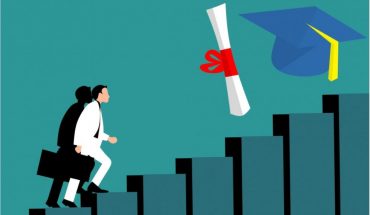BY STEVEN ZHOU, CONTRIBUTOR
Higher education today is facing an array of challenges. Top companies like Apple and Google no longer require job candidates to hold a four-year degree. The National Student Clearinghouse Research Center reported the eighth consecutive year of decreasing college enrollment. Concerns over the mental health of college students have skyrocketed, with the American Psychiatric Association reporting a 78 percent increase in the number of college students being treated over the past decade.
The response from higher education has generally been to entrench themselves deep into a particular approach to improving higher education that, if successful, might “save” the academy.
A number of faculty and administrators focus on the employability of college graduates. More and more degrees are being offered that are geared towards direct industry skills, such as the recent rise in undergraduate statistics and data science degrees. The new QA Commons certificate investigates the career readiness of graduates and issues their stamp of approval to colleges who meet certain standards. To be fair, most students go to college for the prospect of a well-paying career, and from the university’s point of view, successful alumni means more donations and funding for future students.
But employability is not the only purpose of higher education. A publication in 2016 highlighted the non-economic social benefits of higher education, such as interpersonal skills and independent living. Higher education expenditures on student services such as student organizations and intramurals saw the highest increase from 2003 to 2013 compared to instruction, research, academic support, operations, and all other categories. The rise of mental health concerns and need for student development explain the modern focus on hot topics like “leadership development” and “community building.”
Competing with both of these real, valid and measurable goals of higher education is the original intent of collegiate study or “deep learning,” as Marton and Saljo called it in 1976, which is essentially learning for learning’s sake. Faculty, at least in an ideal world, push students to think deeply about topics, explore new ideas and push the envelope to learn more about ourselves and the world around us. The human race advances as the greatest philosophers and researchers pave the way for the future.
The reality, however, is that these three pillars of higher education — employability, student development and “deep learning” — are often competing. My fellow writer at the Fourth Estate, Dominic Pino, pointed out that there’s no clear “owner” of higher education. It’s not just the faculty who create lesson plans that might emphasize the “deep learning” and employability pillars. It’s not just the administration who create resources and opportunities that might emphasize the student development and employability pillars. And it’s not just the students, the majority of whom are probably here for the employability pillar.
So where does this leave us?
We’ve got three somewhat-competing purposes to fulfill. We’ve got dozens of different departments geared towards one or more of these three pillars. We’ve got external stakeholders ranging from parents to financial aid providers who focus on different results.
Sounds a bit like the tongue-in-cheek joke often posed to students: good grades, a social life and sleep — you can only choose two.
Hopefully, that’s not the case here. I pose this as a challenge and a call for ideas: how can higher education meet all three expectations of employability, student development and deep learning? Is there a relative degree of importance for each? How can we measure all three in a tangible and meaningful way?
And while we’re pondering these questions, I probably need to get back to applying for jobs and spending time with friends.
Steven Zhou is a Ph.D. student and teaching assistant in the Department of Psychology at Mason. He previously earned his B.A. and M.A. from Pepperdine University and worked in college student affairs, human resources and data analytics before coming to Mason.




